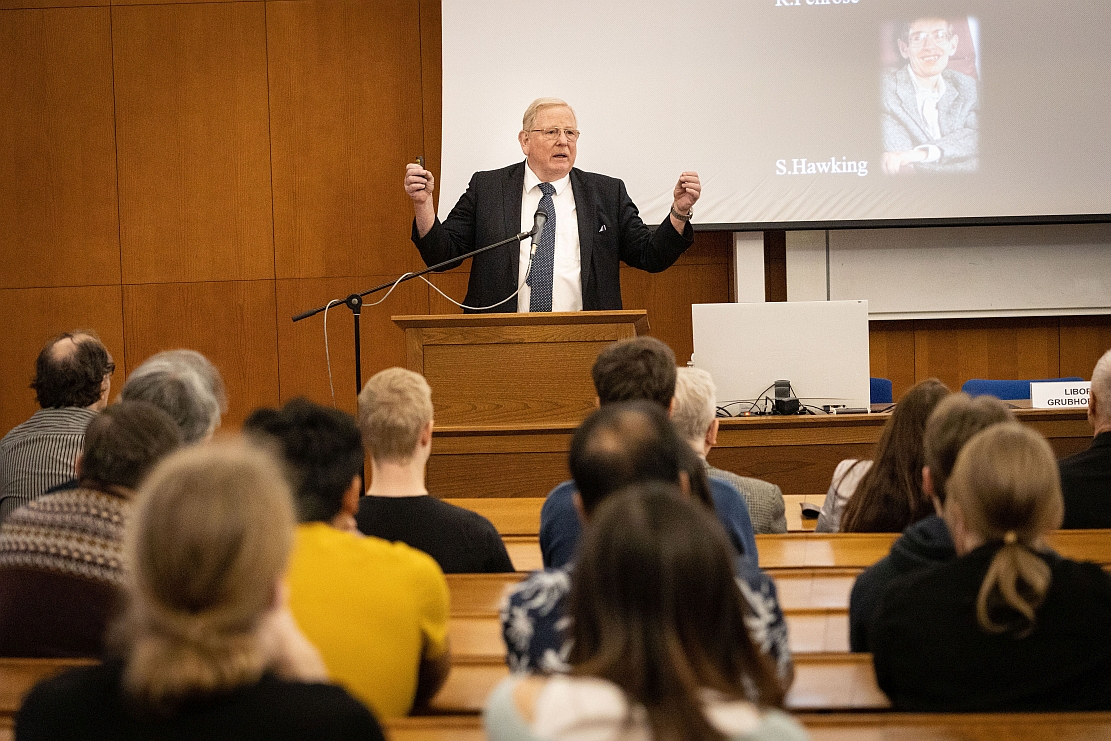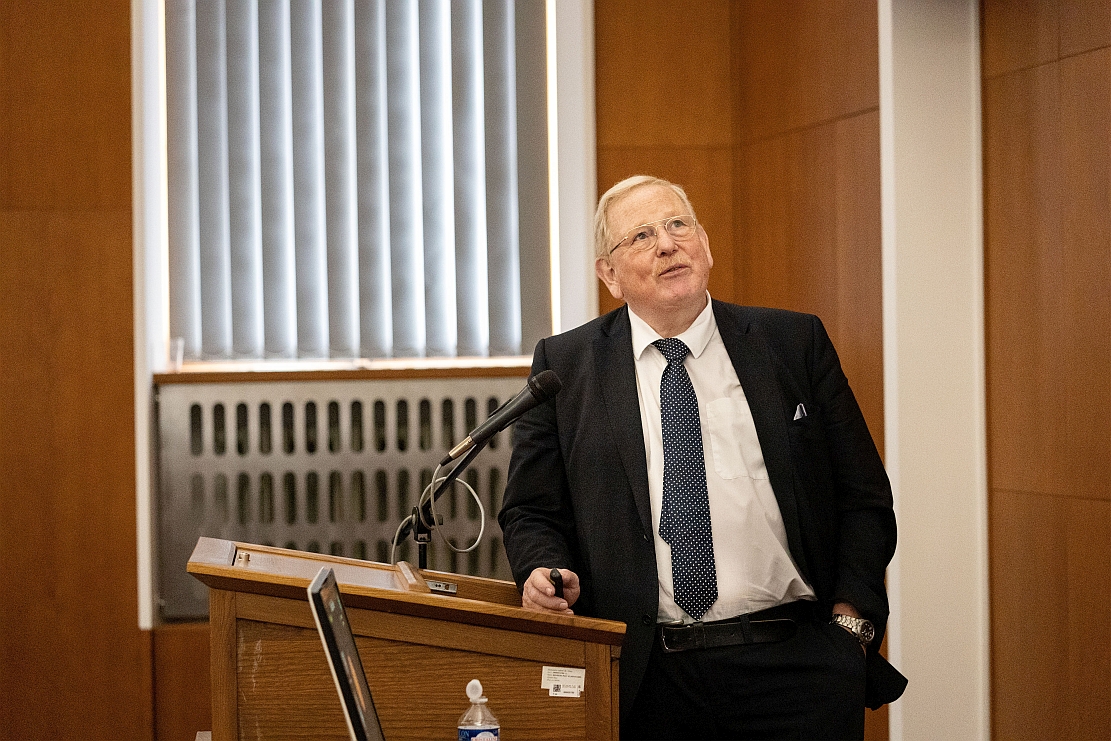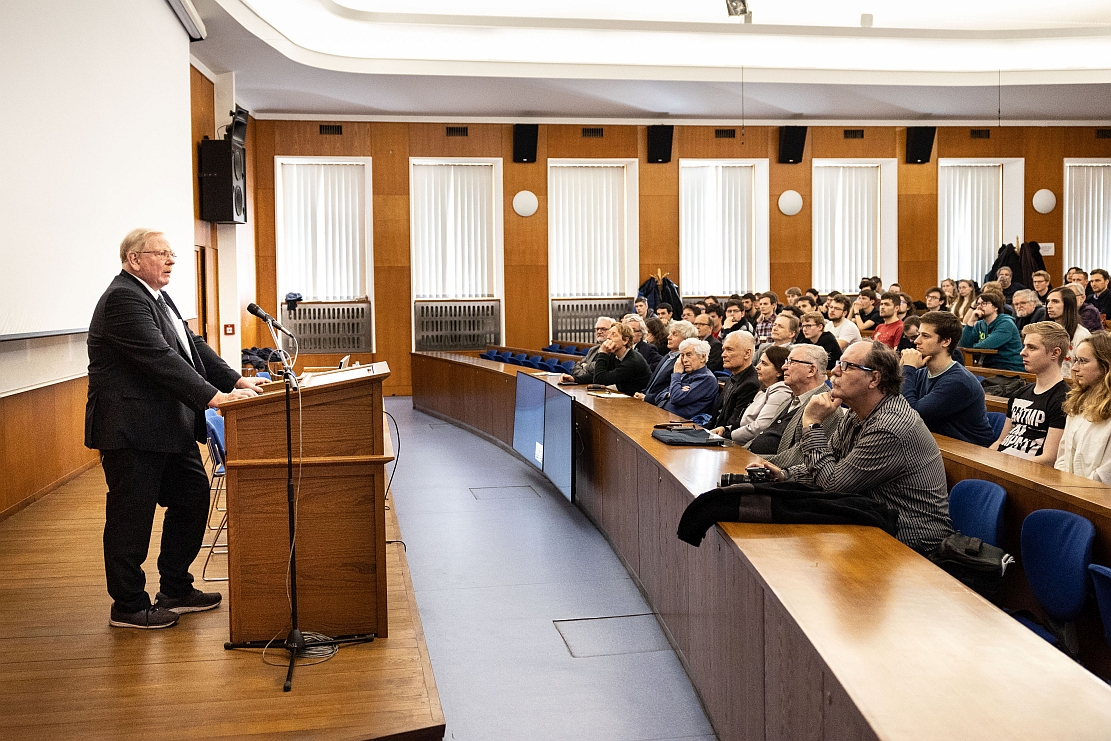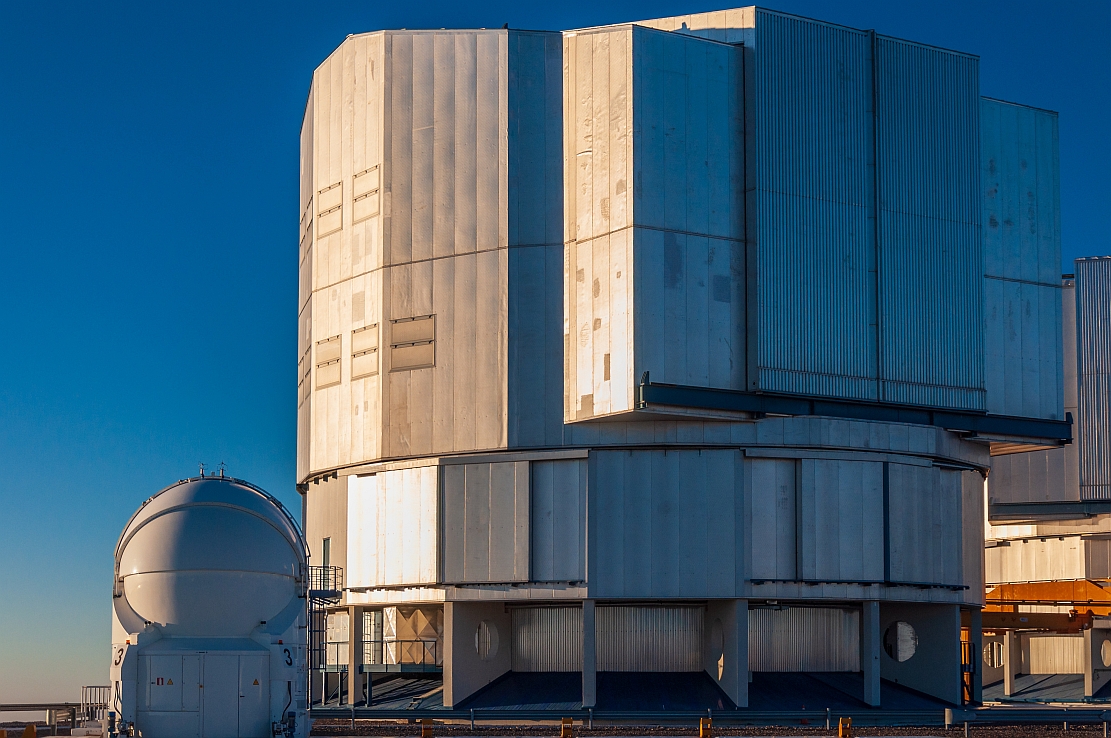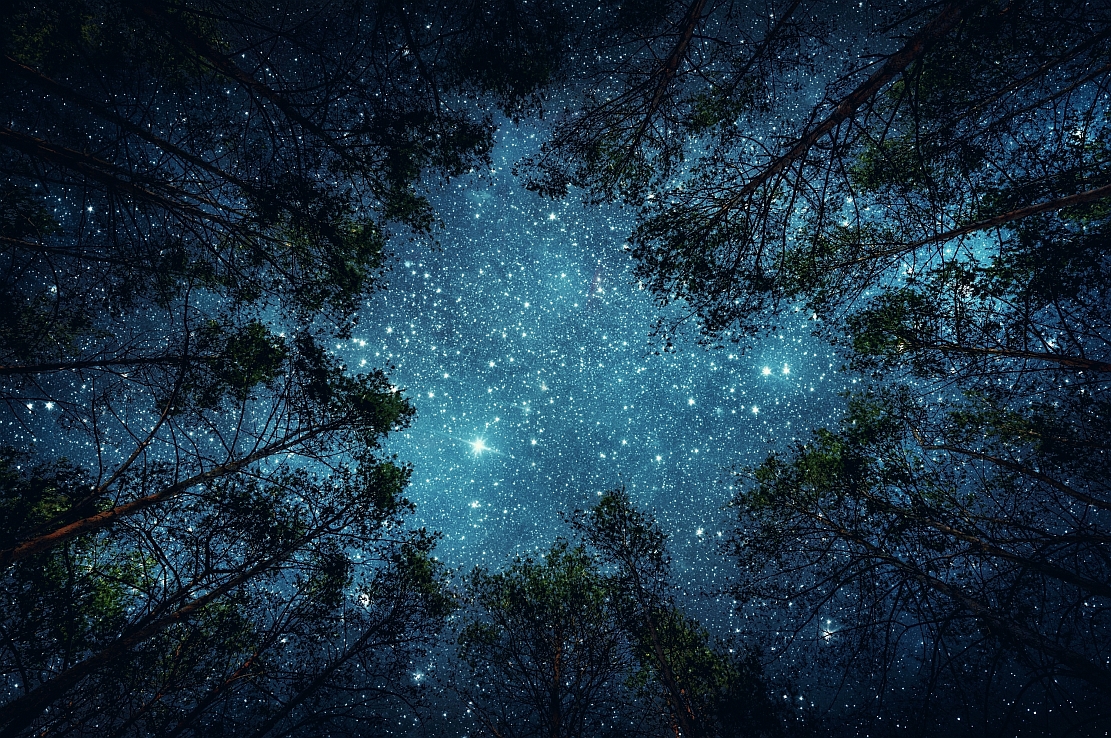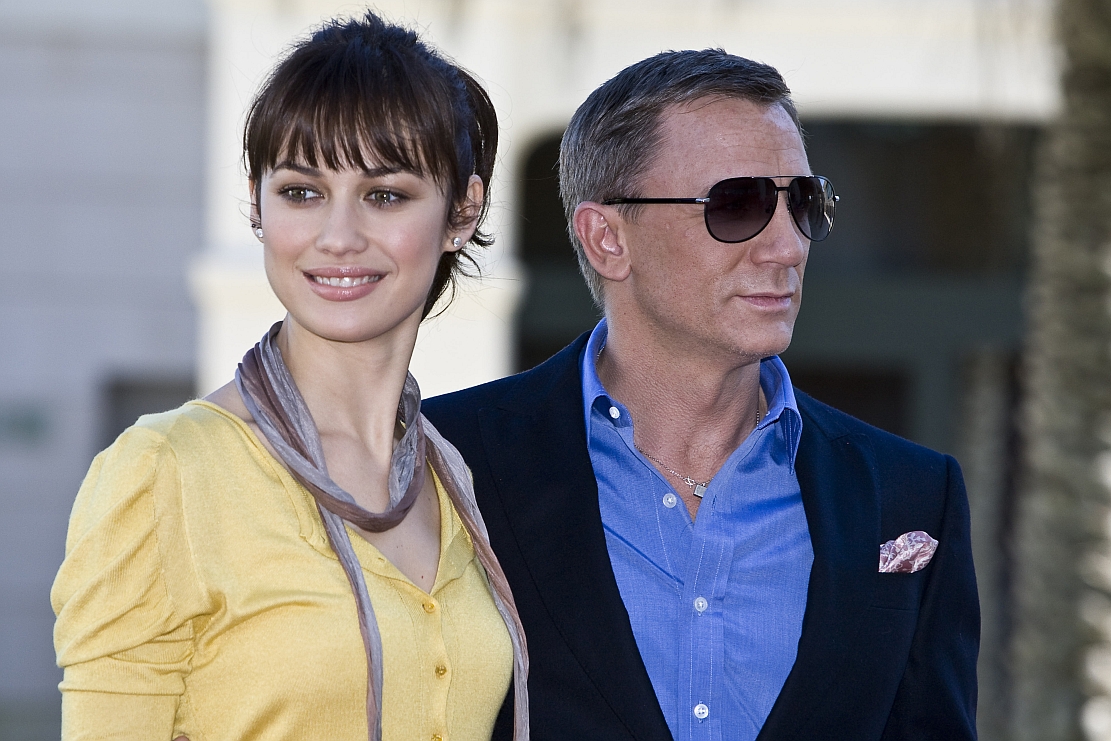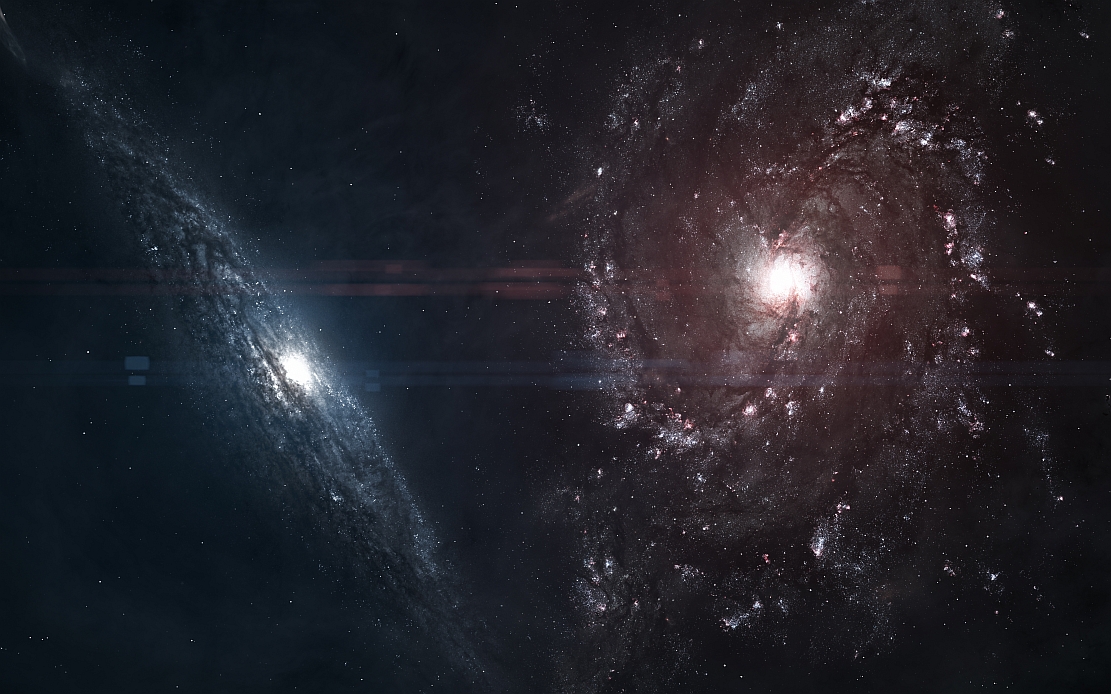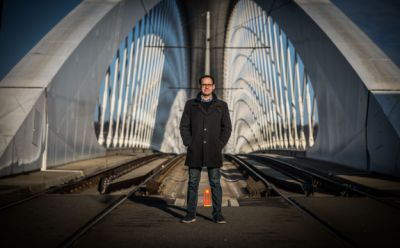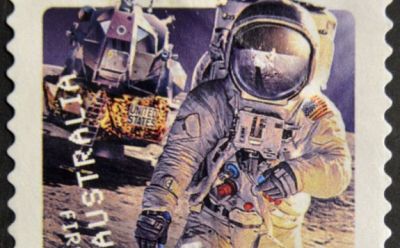The Bolzano lecture series, organised by the Learned Society of the Czech Republic and the Faculty of Mathematics and Physics, and named after the 18th century Bohemian mathematician Bernard Bolzano, returned to Charles University this week. The guest lecturer invited to speak this year was German-born astrophysicist Reinhard Genzel, co-recipient of the Nobel Prize in Physics in 2020.
Genzel and his team over decades sought to prove the existence of a supermassive black hole at the centre of our own galaxy, the Milky Way, a task that required remarkable dedication and ingenuity. Even as technological advances over the last 40 years allowed scientists to test their hypothesis with greater and greater accuracy. Supermassive black holes are now thought to be found at the centre of most galaxies including that of our neighbouring Andromeda. Half of the 2020 Nobel Prize in Physics went to Sir Roger Penrose for this theoretical work on black holes and the other to Profs. Genzel and Andrea Ghez – who pursued their research independently of each other but arrived at the same conclusion.
Reinhard Genzel, co-director of the Max Planck Institute for Extraterrestrial Physics and professor emeritus at the University of California, Berkeley, asked attendees (which included colleagues and above all students from the Faculty of Mathematics and Physics) to follow him on an entertaining recap of his 40 year-long journey or hunt – beginning with the first radio signal from the centre of the galaxy, a region called Sagittarius A star. In the 1990s, Genzel and Ghez headed different teams to look across the 26,000 light years to the galaxy centre, to determine whether a supermassive black hole (the existence of which can be proven indirectly ie. through its effect and interaction on nearby celestial bodies) was really there. And rule out that the signal was not the result of other phenomena entirely.
Using the world’s most advanced telescopes in the 1990s onwards, the teams were able to gradually map the rapid motion of several dozen stars, including some that passed very close to the object in question. Gradually, the astronomers were able to infer the mass of the original radio source, finding similar results: that Sagittarius A star had a mass of four million times that of our sun with a volume smaller than our own solar system. Only a supermassive black hole could fit those parameters. The story is a remarkable one which again advances how we see the universe, as we also gradually learn more about how early galaxies formed. After the lecture, which made creative use of visuals as well as classical and rock music, Professor Genzel spoke to Forum magazine. The ability to capitalise on the latest technology, he said, had been of central importance. Equally important, he said, had been choosing the right question to answer.
“The degree to which you can build complex technical apparatus is the first step and every physicist who does this kind of stuff, as well as any other scientist, knows that. But is it enough? No. A biologist doing research asks ‘Did we pick the right specimen?’ and for physicists the question is the same: it all depends on the example you pick. We were, generally speaking, well-informed as we looked at the galactic centre, and that was a good sign. We knew what we had to do and the only question was whether it was worthwhile to dedicate ourselves to it for the next ten years and so on. You check your experiments step-by-step and then invest more depending on your findings. But if you chose a bad specimen, you have to give up.”
Forum: The animation sequence of all the different stars orbiting the supermassive black hole was the pinnacle of your lecture which is not surprising given the central role that their discovery - and the extraordinary mapping of their trajectories - played. It’s amazing that that kind of imagery, with all the work behind it, will soon be taken ‘for granted’.
“Absolutely. But it’s already in textbooks now and young students around the world are being taught about it because it is so ‘obvious’ now. Just like we have become used to seeing [depictions] of black holes and the event horizon, it serves the same purpose. Of course, some people may still ask ‘Why should I care about black holes? I mean it’s nice that you do, but I don’t!’ (laughs) But there my answer would be It’s more than about the black hole as such. It’s about curiosity. Curiosity that is essential for our societies, with all the mess we are finding ourselves in, to appreciate that we can only solve applied problems – climate change and so on – if we have the brain power and the technology to really do difficult stuff. And that is driven by basic research.
“I mentioned Charles Townes in my lecture. The Nobel laureate from 1964. Everybody knows what a laser is: a very bright light that can be used to cut metal, to conduct eye operations, to be used in atomic time clocks. But did Townes develop lasers for those purposes? No. He was interested in understanding molecules and it was only later that we found incredible applications. Had the problem been turned around, where Townes would be approached and tasked with the aim of finding a light to cut metal? Nah, he wouldn’t have done that.”
Professor Genzel’s lecture struck a perfect balance between specifics and science popularisation. When he mentioned lasers just there, we almost expected him to refer to the famous scene in Goldfinger where the villain threatens 007 with a laser beam and tells Bond he expects him to die. The Very Large Telescope or VLT in Chile, Genzel had explained earlier, had been one of the locations in the later Bond film Quantum of Solace and he had been there at the time of shooting. He remarked it had been difficult to sleep as the film crew shot a sequence where Daniel Craig and Olga Kurylenko (or their doubles) rappelled at the site.
Professor Genzel’s lecture at the packed Blue Hall at Charles University – a stone’s throw from Forum magazine’s office – was a welcome addition in the vaunted lecture series, which in the past saw presentations by speakers such as royal astronomer Martin Rees or Nobel laureate Kip Thorne. Equally valued was an extensive question period afterwards involving students from various faculties.
Genzel replied in-depth to technical as well as popular science questions and even fielded a question about whether the supermassive black hole he had studied represented any danger for Earth.
“Don’t worry… the energy creation of a quasar, for example, is substantial and if you were in a planetary system in the vicinity of a quasar, yeah, then it would be better to leave. It depends on the mass inflow. The inflow at the centre is a fraction of a quasar.
“There is a correlation between the mass of inferred black holes and the mass of galaxies themselves and that is actually surprising. Because when you say the galaxy itself, you are referring to regions that are 50 thousand light years away. That is where most of the mass is coming from. The black hole in Andromeda ‘knows’ it’s in Andromeda, so to speak. The stars in Andromeda, though, ‘don’t know’ there is a black hole at the centre because the gravity out there in the stars which we see are not influenced by it.
“Black holes can be destructive in on periods of extreme mass accretion. Our Milky Way is an ancient galaxy in a geriatric universe. In the early universe there were a lot of quasars and there was a lot of damage, but that is certainly not going to happen in today’s Milky Way. There is one ‘but’: from time to time there are traffic accidents and we will have one in about four billion years when Andromeda and the Milky Way will smash into each other. If you are still around at that time, it would be better to leave.”


